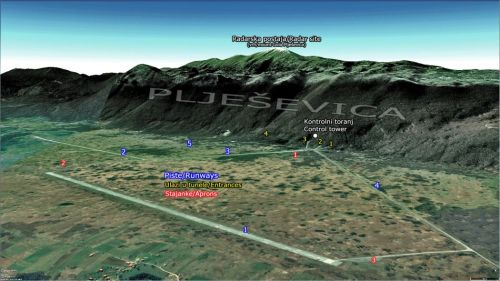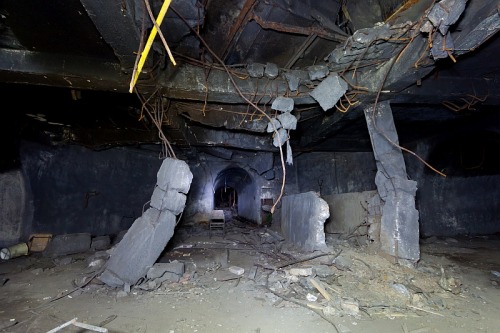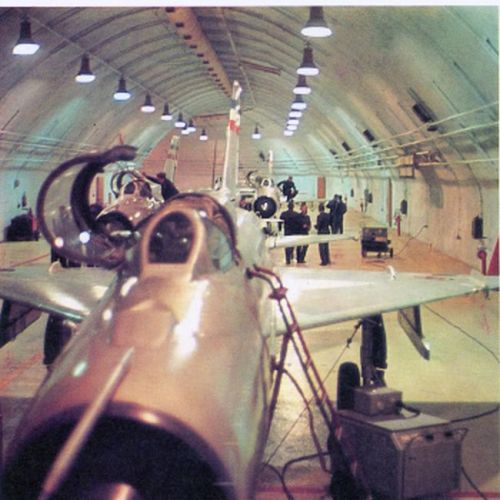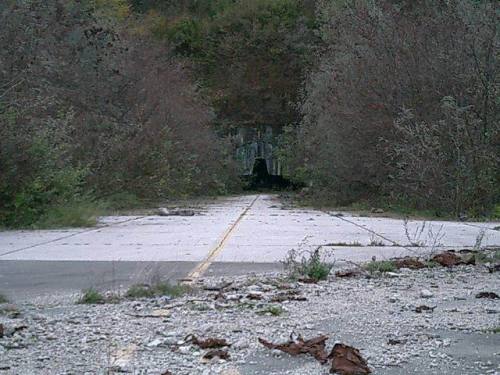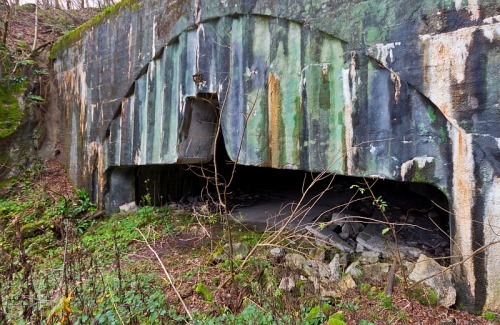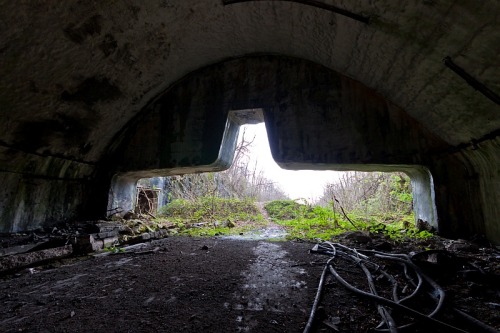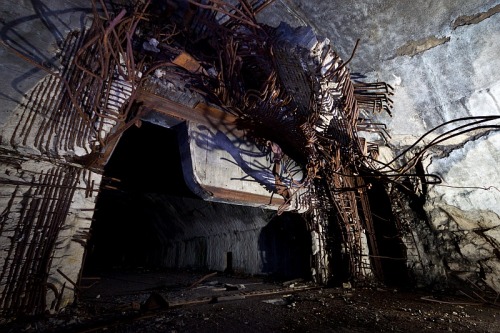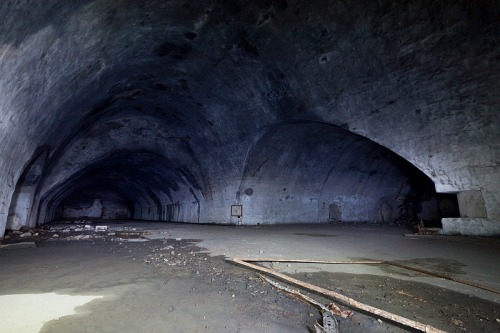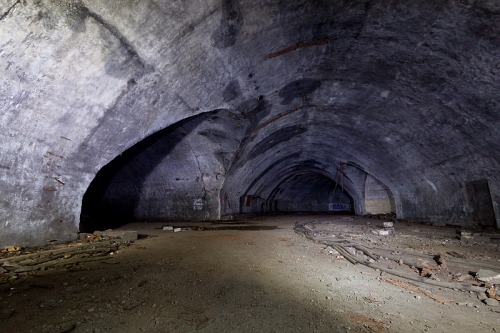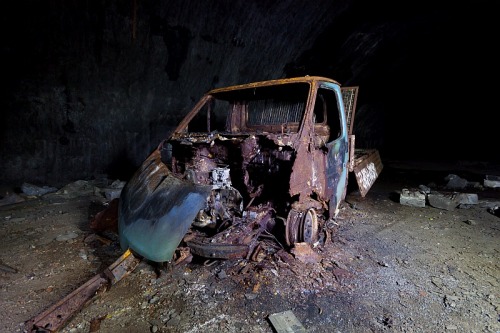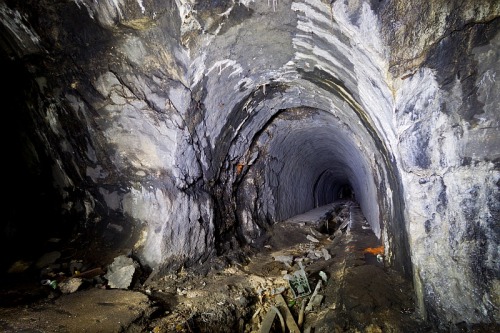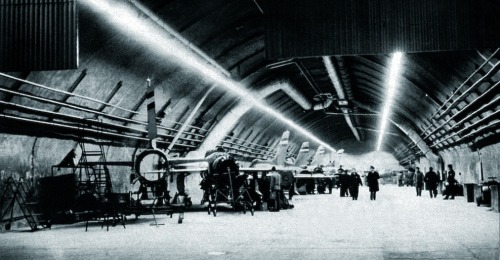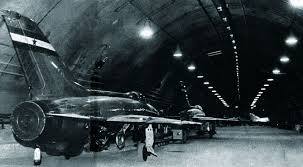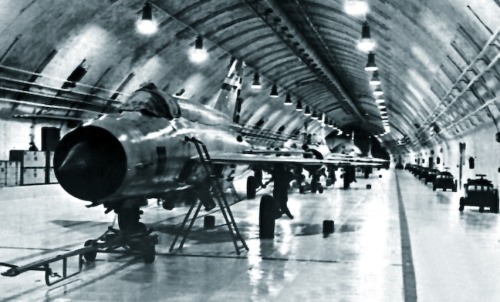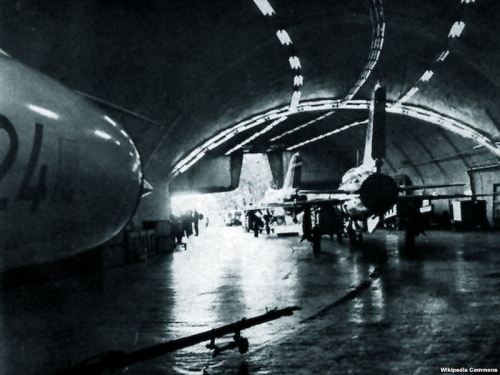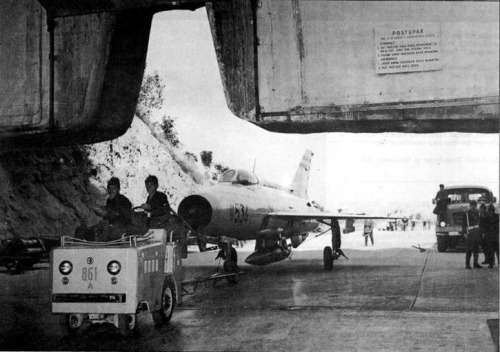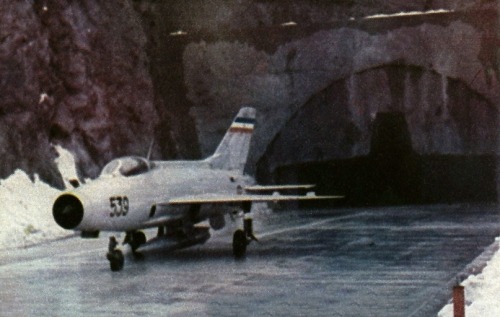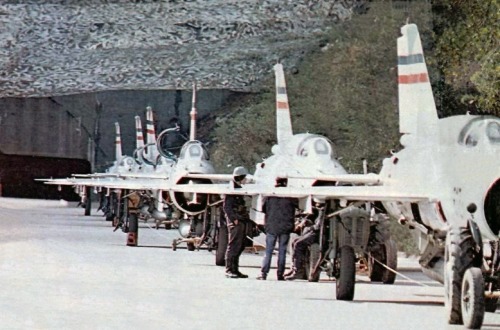History
Construction of the Željava or Bihać Airbase,
code-named “Objekat 505”, began in 1948 and was completed in 1968. During those two decades,
SFRJ spent approximately $6 billion on its construction, three times the combined current annual military budgets of Serbia and Croatia. It was one of the largest and most expensive military construction projects in Europe.
Description
The role of the facility was to establish, integrate, and coordinate a nationwide
early warning radar network in SFRJ akin to
NORAD. The complex was designed and built to sustain a direct hit from a 20-
kiloton nuclear bomb, equivalent to the one dropped on
Nagasaki.
Strategic role
The main advantage of the base was the strategic location of its
“Celopek” intercept and surveillance radar on Mount Pljesevica, at the nerve center of an advanced integrated air defense network covering the airspace and territory of Yugoslavia, and possibly further. In addition to its main roles as a protected radar installation, control center, and secure communications facility, the airbase contained underground tunnels housing two full fighter
squadrons, one reconnaissance squadron, and associated maintenance facilities. The units based there were the 124.LAE (Fighter Aviation Squadron) and 125.LAE, both equipped with
MiG-21bis fighter aircraft, and the 352.IAE (Reconnaissance Aviation Squadron), equipped with
MiG-21R reconnaissance-fighter aircraft.
The underground tunnels ran a total length of 3.5 kilometers, and the bunker had four entrances protected by 100-ton pressurized doors, three of which were customized for use by
fixed-wing aircraft. Eventually, it was hoped that the base would be re-equipped with the indigenously developed
Yu Supersonik aircraft.
Underground “KLEK” complex
The underground facility was lined with semicircular concrete shields, arranged every ten meters, to cushion the impact of incoming munitions. The complex included an underground water source, power generators, crew quarters, and other strategic military facilities. It also housed a
mess hall that could feed 1,000 people simultaneously, along with enough food, fuel, and arms to last 30 days without resupply. Fuel was supplied by a 20-kilometer underground pipe network that ran from a military warehouse on
Pokoj Hillnear
Bihać.
Surface
Topside, the facility had five runways. In the immediate vicinity of the base, there were numerous short-range mobile tracking and targeting radars, missile-equipped sites,
2K12 “Kub” (NATO: SA-6) mobile
surface-to-air missile interceptor systems, motorized infantry bases, military police stations, and a hunting lodge used by civilian and military leaders on occasional leisure trips.
Access points were heavily monitored and guards authorized to fire on anyone attempting to enter without authorization. In practice, however, only special permits were required and unauthorized visitors usually turned away.
Destruction
The airbase was used intensively in 1991, during the
Yugoslav Wars. During its
withdrawal, the
Yugoslav People’s Army destroyed the runway by filling pre-built spaces (explicitly designed for the purpose) with explosives and detonating them. To prevent any possible further use of the complex by opposing forces, the
Military of Serbian Krajina completed the destruction in 1992 by setting off an additional 56 tons of explosives there. The ensuing explosion was so powerful that it shook the nearby city of
Bihać. Villagers claimed that smoke continued to rise from the tunnels for six months after the explosion.
Current status
Local police forces and the CPA currently use the area to train canines with actual land mines, given the extensive number of mines still in the vicinity. Because of the mines, extreme caution must be used when visiting the Željava complex. In November 2000, a
Bosnian Air Force Major died from his injuries after setting off a PROM-2 anti-personnel mine while searching for mushrooms.
The toll of the destruction on base buildings and equipment is incalculable and caused great environmental damage. Potential reconstruction endeavors are limited by a lack of financial resources. An international border cuts the base area in two, and the entire area is heavily mined. The barracks in the nearby village of
Ličko Petrovo Selo are operated by the
Croatian Army.
Today, the base often serves as a waypoint for illegal migrants. A facility for asylum seekers was scheduled to open there in 2004 or 2005, but the idea was abandoned, and new plans were developed for it to become part of the
Slunj military training grounds, and barracks from the nearby
Udbina complex. This idea was dropped, however, in line with the agreement between the countries of former Yugoslavia which bans any military facility up to 15 km inside the borders.
The Bihać Municipality launched an initiative to open a local airport using the runway.
Star command centre
inside of base , look in the past :)
Air base Željava entrance 2 :)
Entrance n.02 :)
Entrance n-02 from inside
Entrance n.02 nuclear blast doors destroyed
Gallery no.02 (mechanical workshop) and gallery no.3 (124.LAE) intersection
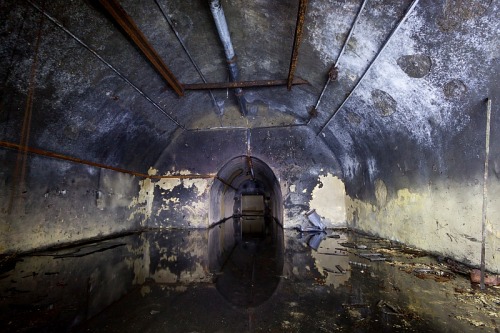
Boomb and missile storage room
Gallery no.3 and gallery no.4
Destroyed smuggling truck ;)
Hallway towards “Star” command centre
Let’s go back in past.
Aircraft maintenance inside aircraft tunnel
MIG 21F-13s parked inside tunnnel
Parked and lined up
Aircraft being pulled outside
A MIG 21-F13 being towed inside Air Base
MIG 21F-13 exiting through coustom door
Another angle, entrance to complex
Izvori:
• Izvorni autorski tekst na forumu MyCity [2]
• Raspored pista [3]
• Fotogalerija Željave danas [4]
• Bojan B. Dimitrijević - Jogoslovensko ratno vazduhoplovstvo 1942-1992
Vanjske poveznice
• Underground adventure 2007 [5]
• Željava-LYBI [6]
References
[1] http:/ / stable. toolserver. org/ geohack/ geohack. php?pagename=Aerodrom_%C5%BDeljava&
params=44_50_11_N_15_45_29_E_type:airport_region:BA/ HR_source:dewiki
[2] http:/ / www. mycity. co. yu/ Vojno-tehnicka-dostignuca/ Enigma-JNA-Podzemni-Aerodrom-Zeljava. html
[3] http:/ / zeljava-lybi. com/ forum/ viewtopic. php?f=15& t=321
[4] http:/ / zeljava-lybi. com/ Zeljava-Fotografije. html
[5] http:/ / www. naj-naj. info/ zelj







